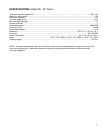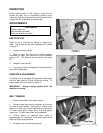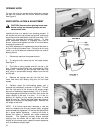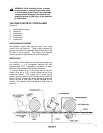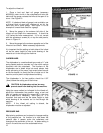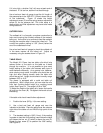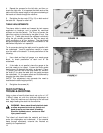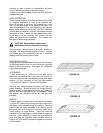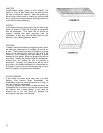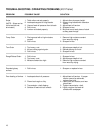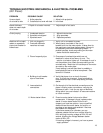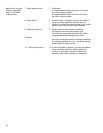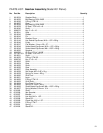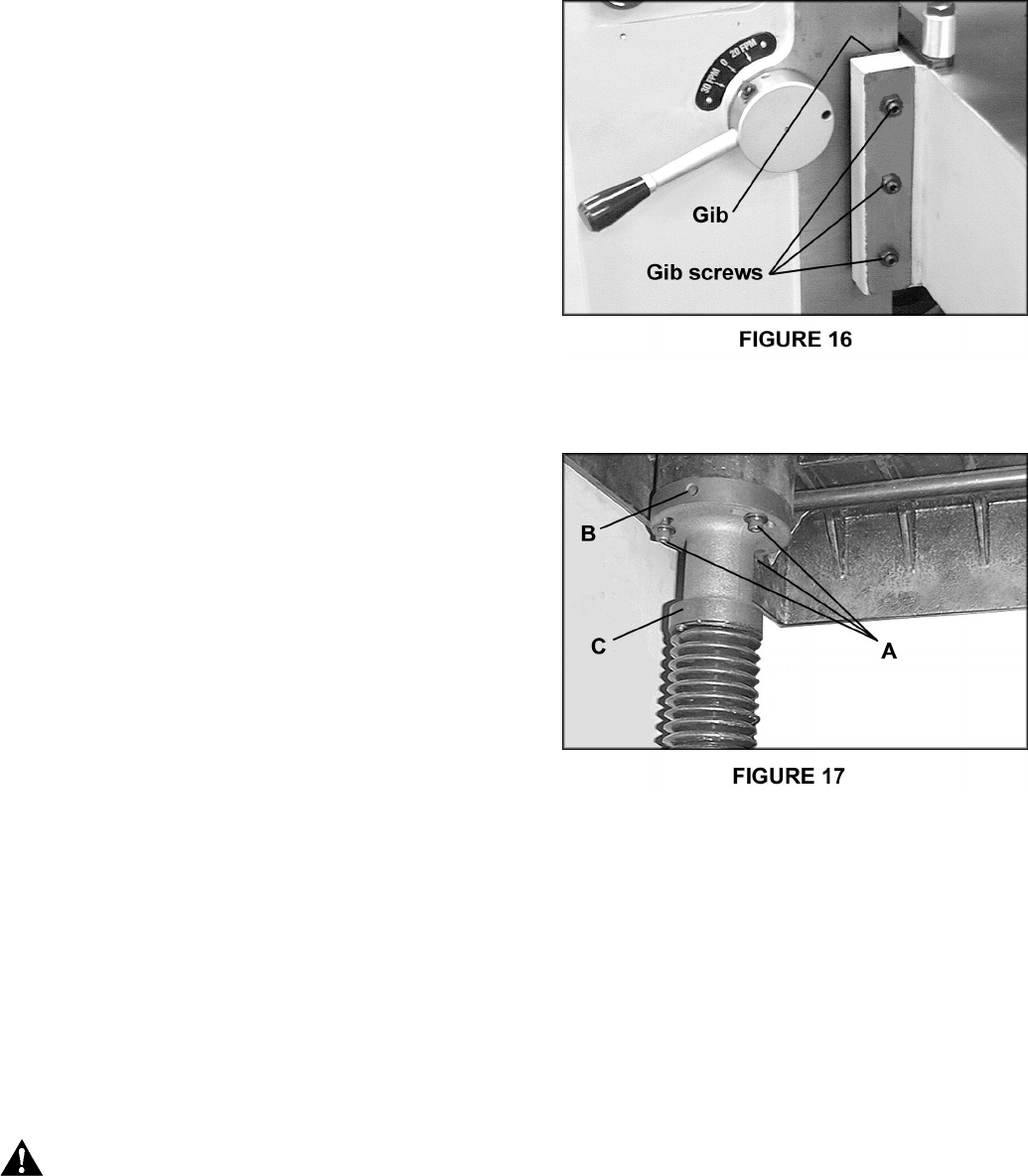
14
4. Repeat the process for the left side, and then re-
check the right side. It is important that both ends of the
table rolls be the same height to help prevent skewing of
the board as it feeds through the machine.
5. Re-tighten the hex nuts (C-Fig. 15) on both ends of
the table roll. Repeat for other roll.
TABLE ADJUSTMENTS
The planer table is raised and lowered by twin screws
supported on bearings, and is guided by machined
surfaces on the side panels. The fit-up to prevent the
table from rocking is controlled by two gibs in front. See
Figure 16. These gibs should be adjusted individually
using the gib screws provided so that the ways are
lightly contacting on all four surfaces. The gibs should
be tight enough to prevent rocking or movement of the
table when the planer is in operation.
To do accurate planing the table must be parallel with
the cutterhead. Lack of parallelism results in a taper
over the width of the board. To check parallelism do the
following:
1. Use a bed and feed roll gauge, or a wood gauge
block, to check parallelism at each end of the
cutterhead.
2. If the table is not parallel, place the gauge at the
end that needs to be raised. Loosen the three socket
head screws (A) beneath the table, as shown in Figure
17, place a rod into one of the open holes (B), and turn
the shaft (C) to raise the table until the gauge contacts
the cutterhead. Or, the same effect can be achieved by
lowering the other side of the table.
(NOTE: This adjustment may generate the need to
recalibrate the table height pointer.)
3. Re-tighten the screws (A).
TEST CUTTING &
TROUBLE-SHOOTING
Using a piece of semi-finished stock, set up for a 1/16"
(1.58mm) deep cut with the quick-set adjustment at
zero. Start the machine and, standing to the left-hand
side, begin feeding the stock into the machine.
WARNING: Never stand directly behind stock
or allow anyone else to do so, and do not
bend down to see how stock is feeding.
Should a kickback occur, serious or fatal
injury could result.
The infeed roll should take the material and force it
under the chipbreaker and cutterhead. If the material
feeds through effortlessly, examine the finished cut
carefully for imperfections.




